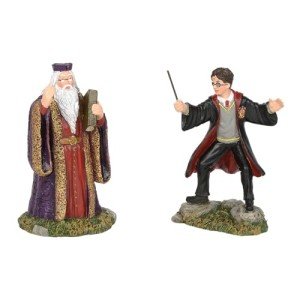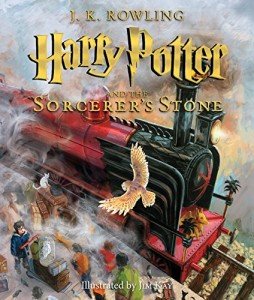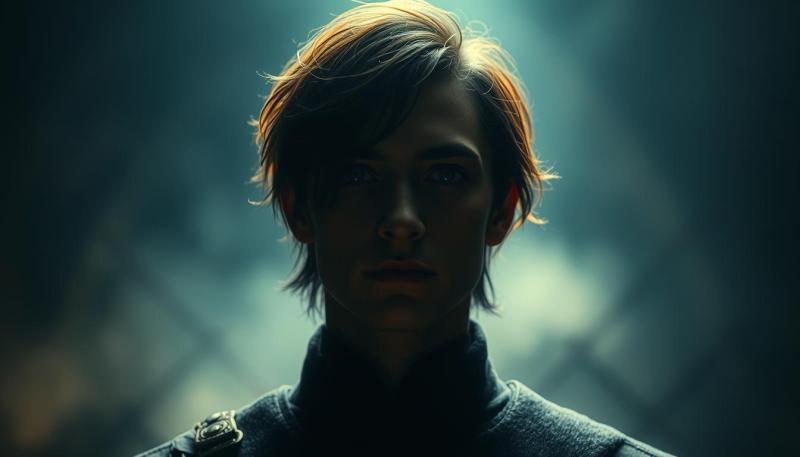I’ll never forget the first time I stayed up past midnight to finish a book. The glow of my flashlight flickered across pages filled with dark magic and even darker intentions. As I read about a certain pink-clad bureaucrat quietly dismantling freedom at a magical school, I realized something: the most dangerous villains often hide behind polite smiles and false kindness.
That’s the genius of the wizarding world’s antagonists. They’re not just obstacles for heroes to overcome – they’re twisted reflections of real-world fears. Some wield power openly, while others manipulate from the shadows. What makes them unforgettable isn’t their spells, but the chilling truth that their worst qualities exist in our world too.
We’ve all met people who use authority to bully others or charm to disguise cruelty. The franchise’s antagonists resonate because they amplify these everyday dangers into magical threats. From schoolyard tormentors to soul-splitting tyrants, they challenge us to confront uncomfortable questions about power, morality, and the choices that shape our lives.
Key Takeaways
- Antagonists range from petty bullies to world-threatening forces
- Complex motivations make villains feel frighteningly human
- Characters mirror real-world issues through magical metaphors
- Evil often hides behind authority or false kindness
- Villainy drives character growth and thematic depth
- Cultural impact extends beyond books into global discussions
An Introduction to the Dark Side of Magic
Remember that teacher who seemed sweet but docked points for breathing too loud? The wizarding world’s antagonists work the same way. They don’t need lightning scars or snake companions to leave lasting impressions – their danger lies in how familiar their cruelty feels.
Overview of Harry Potter Villains
What makes these characters unforgettable isn’t just their spells. It’s how they mirror real-world power dynamics. You’ll find bureaucrats weaponizing rules, zealots preaching purity, and everyday people choosing cruelty when it’s convenient.
Consider this: the most complex antagonists often believe they’re heroes. Some crave control through dark magic. Others use political influence or social manipulation. Their motivations range from childhood trauma to misguided superiority complexes.
Three key traits define them:
- Twisted versions of relatable desires
- Ability to corrupt systems and individuals
- Gradual moral decline rather than born evil
We’ve all encountered people who abuse authority or hide malice behind smiles. The series magnifies these experiences through magical metaphors. A nosy journalist becomes literal vermin. Schoolyard bullies escalate to life-threatening prejudice.
These villains challenge us to ask uncomfortable questions. When does ambition become tyranny? How thin is the line between justice and cruelty? Their presence reminds us that true power lies in resisting darkness – both in magic and mundane lives.
Origins of the Iconic Evil in the Wizarding World
There’s a saying in my family: “Hurt people hurt people.” That truth echoes through the wizarding world’s darkest corners. These antagonists didn’t spring from nothing – their cruelty grew like twisted vines from poisoned soil.
Backstory Influences and Motives
You’ll notice most evil in this series starts at home. Take the Gaunts – a family so obsessed with blood purity, they treated their own children like breeding stock. Their ancestral ring wasn’t just jewelry – it became a weapon of control.
Three patterns emerge:
- Generational hatred taught before bedtime stories
- Power vacuums created by war and loss
- Fear of irrelevance driving desperate acts
Corvus Lestrange didn’t wake up one day deciding to curse marriages. Years of entitlement warped his understanding of love into possession. Similarly, Tom Riddle’s orphanage years left him craving dominance over life itself.
Historical Context Within the Series
The series roots its darkness in real-world struggles. Pure-blood mania mirrors historical caste systems, while characters like Umbridge exploit bureaucratic loopholes familiar to anyone who’s battled red tape.
Consider how:
- Post-war instability allowed extremists to rise
- Magical supremacy echoed 20th-century eugenics
- Systemic oppression of house-elves normalized cruelty
These parents of prejudice created children like Draco Malfoy – a boy taught to sneer before he could walk. Their stories show evil isn’t born – it’s built, one compromised choice at a time.
Unmasking harry potter villains: Characteristics & Impact
What separates a garden-variety troublemaker from a truly dangerous antagonist? The answer lies in how they bend reality itself to serve their goals. These foes don't just break rules – they rewrite them, turning institutions and relationships into weapons.

Defining Villainy in the Wizarding World
True darkness isn't measured by spell strength. It's found in how characters exploit systems meant to protect. Consider how some manipulate laws to justify prejudice, while others use social influence to silence dissent.
| Antagonist Type | Primary Tool | Lasting Impact |
|---|---|---|
| Ideological Zealots | Fear campaigns | Societal division |
| Bureaucratic Manipulators | Policy abuse | Erosion of trust |
| Personal Grudge Holders | Relentless vendettas | Psychological trauma |
How Villain Actions Shape the Story
Every cruel choice creates domino effects. A single act of bullying in childhood fuels decades of resentment. Corrupt legislation forces heroes to operate outside the law they're trying to save.
Three narrative impacts stand out:
- Forced moral compromises by protagonists
- Accelerated character maturation under pressure
- Revelation of institutional weaknesses
Through this spectrum of antagonists, we see how evil thrives when good people tolerate small injustices. The story's depth comes from showing how darkness spreads – not through curses, but through whispered lies and tolerated cruelties.
The Dark Evolution: From Minor Antagonists to Full-Fledged Threats
Growing up, my brother collected action figures, meticulously sorting them into "heroes" and "villains." But the most fascinating ones always lived in the gray area - those that switched sides when you least expected. That's exactly what makes these evolving antagonists so compelling: their capacity to surprise us.

Transformation of Character Roles
Remember that kid in school who talked big but froze when real trouble came? That's the genius of layered antagonists. We watch them wrestle with escalating stakes, their hands shaking as they hold life-changing choices. One moment they're sneering in hallways - the next, facing consequences that rewrite their destiny.
Take the silver-haired student we love to hate. Forced into a role beyond his maturity, he becomes a mirror showing how thinking about cruelty differs from enacting it. His hesitation during critical moments reveals something startling: even groomed antagonists can develop moral muscle memory.
Shifts in Villain Archetypes Over the Years
The series masterfully ages its darkness like fine wine. Early antagonists wield childish taunts, while later threats weaponize bureaucracy and systemic oppression. This evolution mirrors our own growing understanding of real-world power structures.
Consider how:
- Schoolyard grudges morph into lethal ideologies
- Petty jealousy curdles into generational trauma
- Compliance with evil becomes its own form of violence
What begins as simple rivalry matures into complex examinations of choice. Some characters crumble under pressure, while others discover unexpected resolve. This development across years makes the journey feel earned - both for the characters and readers growing alongside them.
Voldemort's Reign: The Dark Lord Exposed
Fear has a way of reshaping reality long before dark magic enters the picture. The most chilling antagonists aren’t those who simply crave power – they’re those who weaponize our deepest terrors. No character embodies this truth more than the wizard who turned mortality itself into an enemy.
Rise to Power and the Fear of Death
Tom Riddle’s transformation into Lord Voldemort reveals how brilliance curdles without empathy. His childhood obsession with cheating death became a self-fulfilling prophecy. By splitting his soul seven times, he achieved unnatural longevity – but at what cost?
The Dark Lord’s journey shows power’s corrupting potential. Each Horcrux didn’t just preserve life – it eroded humanity. What began as a talented orphan’s survival strategy became a monstrous crusade against existence itself.
Harry Potter Village Figurine Set: Harry & Headmaster
Bring the magic of Hogwarts to life with this enchanting figurine set featuring Harry and the Headmaster
Product information
$45.00 $36.00
Product Review Score
4.6 out of 5 stars
186 reviewsProduct links
Symbolism Behind the Name and Legacy
That chilling alias – Voldemort – literally means “flight from death” in French. It’s not just a title, but a manifesto. His followers didn’t just fear him – they feared being him, a hollow creature clinging to existence through stolen fragments of soul.
The genius lies in how his name became more dangerous than his spells. Whispered warnings about “He-Who-Must-Not-Be-Named” created psychological warfare before battles even began. This legacy teaches us that true power often lives in the stories we believe – and the fears we refuse to name.
Professor Quirrell and the Start of the Wizarding Menace
Deception often wears the mask of normalcy, making it dangerously invisible. The unassuming wizard who stuttered through Defense Against the Dark Arts lessons taught us this lesson best. Behind those trembling hands and nervous smiles hid a truth more unsettling than any monster in the Forbidden Forest.
Illustrated Edition of Harry Potter and the Sorcerer's Stone
A magical journey like never before with stunning illustrations that bring the Wizarding World to life
Product information
$39.99 $21.16
Product Review Score
4.63 out of 5 stars
72 reviewsProduct links
Hidden Agendas and Deceptive Facades
Remember that chill when Quirrell’s turban unwrapped? His entire persona – the jumpy professor obsessed with garlic – was crafted to distract. What makes Professor Quirrell fascinating isn’t just the face under his headwrap, but how he weaponized people’s tendency to underestimate.
This brilliant scholar’s downfall began with curiosity. Traveling Albania to study dark magic, he found more than academic glory. The man who once sought knowledge became a hollow vessel, his body literally hosting the evil he tried to understand.
His Roman namesake Quirinus governed transitions – fitting for a character bridging childhood adventures to darker realities. That meek exterior wasn’t just an act. It was strategic camouflage, proving true danger often hides in plain sight.
We’ve all encountered people masking harmful intentions with charm or timidity. Quirrell’s story warns us: the pursuit of power can twist even promising minds. His legacy? A masterclass in how deception thrives when we judge books by their covers.
FAQ
Why are villains so important to the wizarding world’s storytelling?
Antagonists like Voldemort and Bellatrix Lestrange create high-stakes conflicts that challenge heroes to grow. Their pursuit of power, control, or twisted ideals forces characters like Harry to confront fear, loss, and moral choices—making the story emotionally gripping.
How does a character’s backstory influence their turn to dark magic?
Trauma, rejection, or obsession often fuel villainous motives. For example, Tom Riddle’s hatred of his muggle father and fear of mortality drove him to become Lord Voldemort. These layers make antagonists feel human, even as they commit inhuman acts.
What role does fear play in shaping iconic antagonists?
Fear is a weapon and a weakness. Voldemort uses terror to control others but is paralyzed by his dread of death. This duality humanizes him while amplifying his threat—showing how fear corrupts both the villain and their victims.
Why do some minor antagonists become major threats over time?
Characters like Draco Malfoy or Peter Pettigrew start as pawns but evolve through desperation or betrayal. Their arcs reveal how the wizarding world’s systemic flaws—like blood purity obsessions—turn ordinary flaws into catastrophic dangers.
How does Voldemort’s legacy impact younger generations in the series?
His reign leaves scars—families torn apart by Death Eaters, institutional distrust, and inherited trauma. This lingering damage forces characters like Harry and Neville to confront whether history will repeat—or if they can break the cycle.
What makes Professor Quirrell a unique entry point for the series’ darker themes?
His meek facade hiding Voldemort’s presence introduces the idea that evil isn’t always obvious. It sets the tone for future villains who exploit trust, authority, or secrecy—like Barty Crouch Jr. or Dolores Umbridge.







